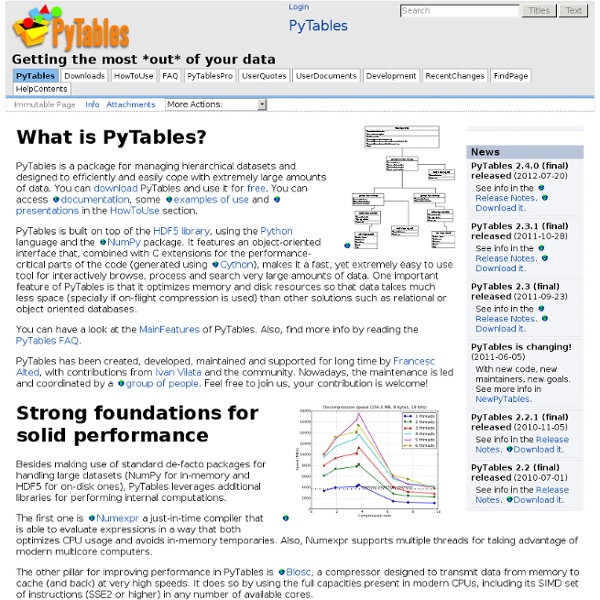



PyQtGraph - Scientific Graphics and GUI Library for Python Starting Python Development on Windows These are some notes on starting Python development on Windows. Installing Python First, download the latest version of Python from the official Website. The Windows version is provided as an MSI package. To install it manually, just double-click the file. The MSI package format allows Windows administrators to automate installation with their standard tools. By design, Python installs to a directory with the version number embedded, e.g. Typing the full path name for a Python interpreter each time quickly gets tedious, so add the directories for your default Python version to the PATH. C:\Python27\;C:\Python27\Scripts\ You do not need to install or configure anything else to use Python. Briefly, the default Python package automatically provides you with: The Python runtime An interactive shell (use the menu icon, or type python in a command prompt window) A basic IDE, called IDLE A large standard library, along with documentation An extensive tutorial, to help you get started Essential Tools
VPython User’s Guide — PyTables 3.2.2 documentation Redistribution and use in source and binary forms, with or without modification, are permitted provided that the following conditions are met: a. Redistributions of source code must retain the above copyright notice, this list of conditions and the following disclaimer. b. c. Monte - machine learning in Python News Overview — SimPy 3.0.2 documentation Event discrete simulation for Python. News | PyPI | Bitbucket | Issues | Mailing list >>> import simpy>>>>>> def clock(env, name, tick):... while True:... print(name, env.now)... yield env.timeout(tick)...>>> env = simpy.Environment()>>> env.process(clock(env, 'fast', 0.5))<Process(clock) object at 0x...>>>> env.process(clock(env, 'slow', 1))<Process(clock) object at 0x...>>>> env.run(until=2)fast 0slow 0fast 0.5slow 1fast 1.0fast 1.5 SimPy is a process-based discrete-event simulation framework based on standard Python. Its event dispatcher is based on Python’s generators and can also be used for asynchronous networking or to implement multi-agent systems (with both, simulated and real communication). Processes in SimPy are simple Python generator functions and are used to model active components like customers, vehicles or agents. Simulations can be performed “as fast as possible”, in real time (wall clock time) or by manually stepping through the events.
Model Builder Python Library From OSGeo Wiki Motivation Several OSGeo software projects support Python. However, a global abstraction layer is lacking which would help to do "OSGeo Python programming". We think of well documented bindings to the various software projects which are handled as plugins (or whatever appropriate). Functionality Shared functions may include Import/Export of data Linking to external data sources Reprojection tools GIS analysis Plotting and printing Programming Language Python SWIG ... Existing code to be recycled Efforts outside the OSGEO world Architecture Draft concept: License It is proposed to license the OSGeo Python Library under ... Communication A new mailing list is created: Unofficial Python GIS SIG Interested people
plotexplorer_gui 0.3.2 Package Index > plotexplorer_gui > 0.3.2 Not Logged In plotexplorer_gui 0.3.2 Downloads ↓ A wxpython/matplotlib script for plotting and contrasting a collection of graphs This script creates a matplotlib window next to the sortable list of checkboxes from which graphs can be selected. This script depends upon wxpython and matplotlib. Downloads (All Versions): 7 downloads in the last day 84 downloads in the last week 555 downloads in the last month Website maintained by the Python community Real-time CDN by Fastly / hosting by Rackspace / design by Tim Parkin
Intro and Overview - Vision Egg Homepage — Modular toolkit for Data Processing (MDP) Topical Software — SciPy.org This page indexes add-on software and other resources relevant to SciPy, categorized by scientific discipline or computational topic. It is intended to be exhaustive. If you know of an unlisted resource, see About This Page, below. You may also want to take a look at the list of Scikits, Python packages oriented specifically at scientific computation tasks. The listings are roughly organized by topic, with introductory resources first, more general topics next, and discipline-specific resources last. Unless otherwise indicated, all packages listed here are provided under some form of open source license. If you distribute or know of a resource that is not listed here, please add a listing. Please include a description — be as brief as you can, but make sure you include in your text a link to the resource’s home page and some keywords that potential users might search for to find the resource. In addition, please also list your software on